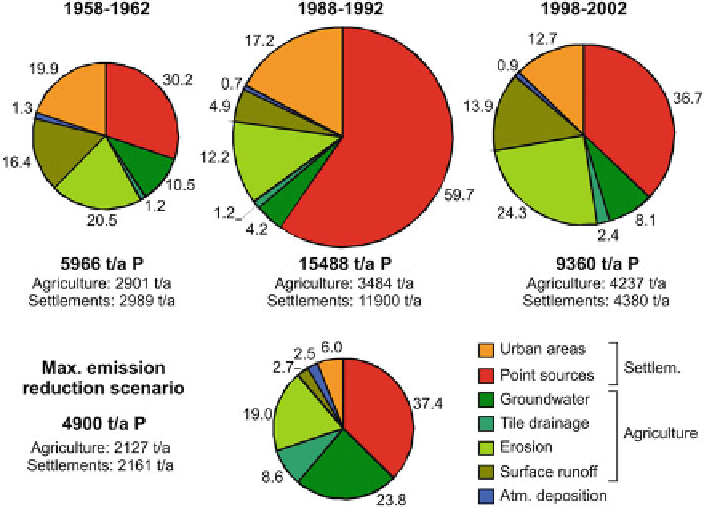Geoscience Reference
In-Depth Information
During short periods, the sediment can become a major source and counteract
load reduction measures applied in the river basin. This is especially important
because the release happens during the summer period and can potentially enhance
coastal eutrophication.
18.6 Phosphorus Load Reductions in the River Basin
Compared to the total riverine P loads, internal eutrophication has only a minor
importance. Further, it cannot be directly controlled by management measures.
Therefore, phosphorus management has to start in the river basin. Figure
18.6
shows
the total emissions and the different pathways into the Oder River for three periods,
around 1960, 1990 and 2000, based on MONERIS model simulations.
In 1960, settlements, which summarize paved urban areas and sewer systems,
and agriculture were of similar importance and contributed nearly 50% to the total
emissions of 6,000 t total phosphorus. Until 1990, increasing population and the
lack of sewage treatment plants caused a steep increase in point source emissions
and a strong increase in total P emissions (>15,000 t). Around the year 2000, the
Fig. 18.6
Total phosphorus emissions into the Oder River for three periods as well as the results
of a maximum emission reduction scenario. All data are based on MONERIS model calculations.
Due to phosphorus retention in the river, only 39% of these emissions or 3,640 t/a (for the period
1998-2002) enter the Oder Lagoon with the river. Twenty-two percent or 2,070 t/a of the total
emissions are bio-available for primary production in the lagoon

